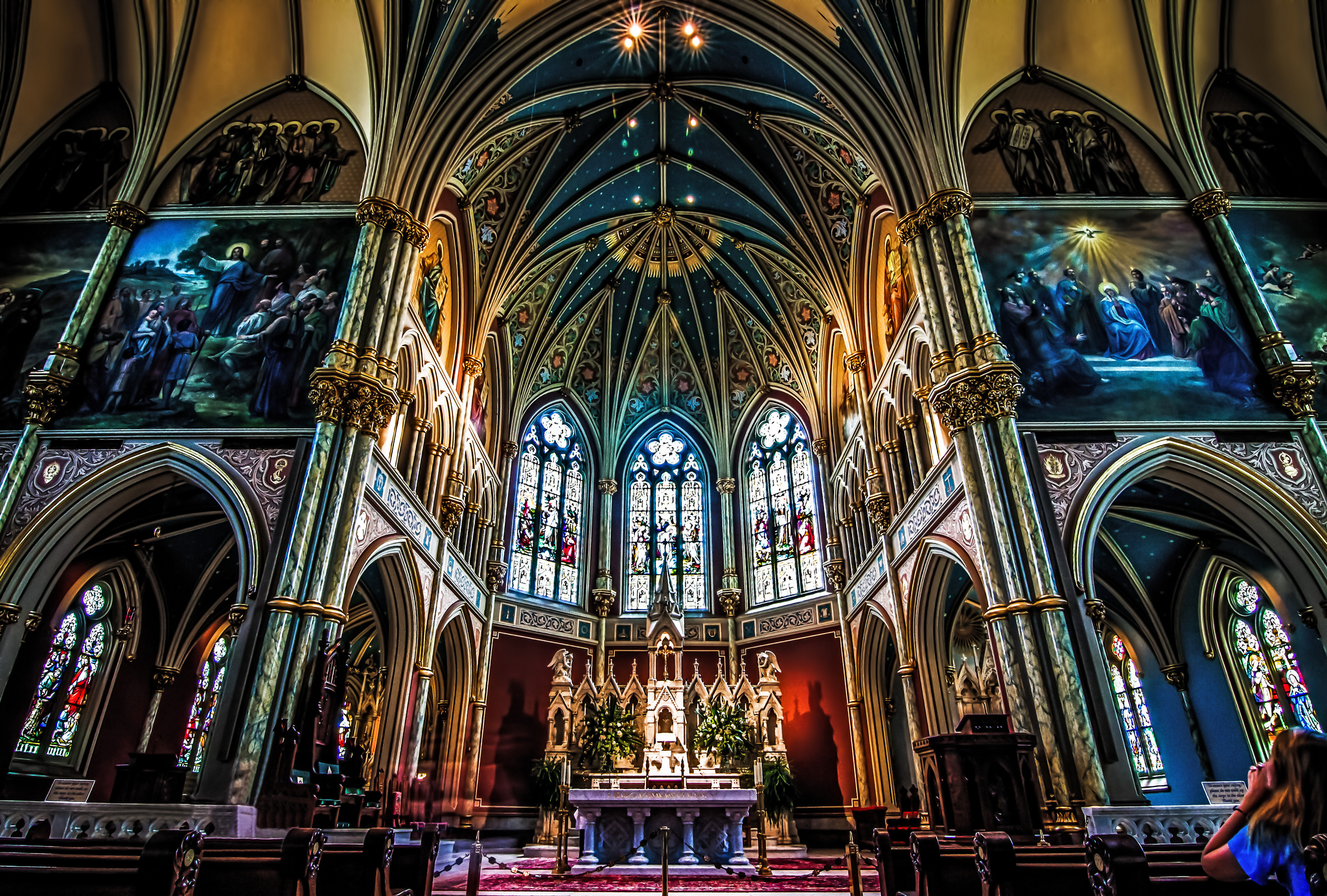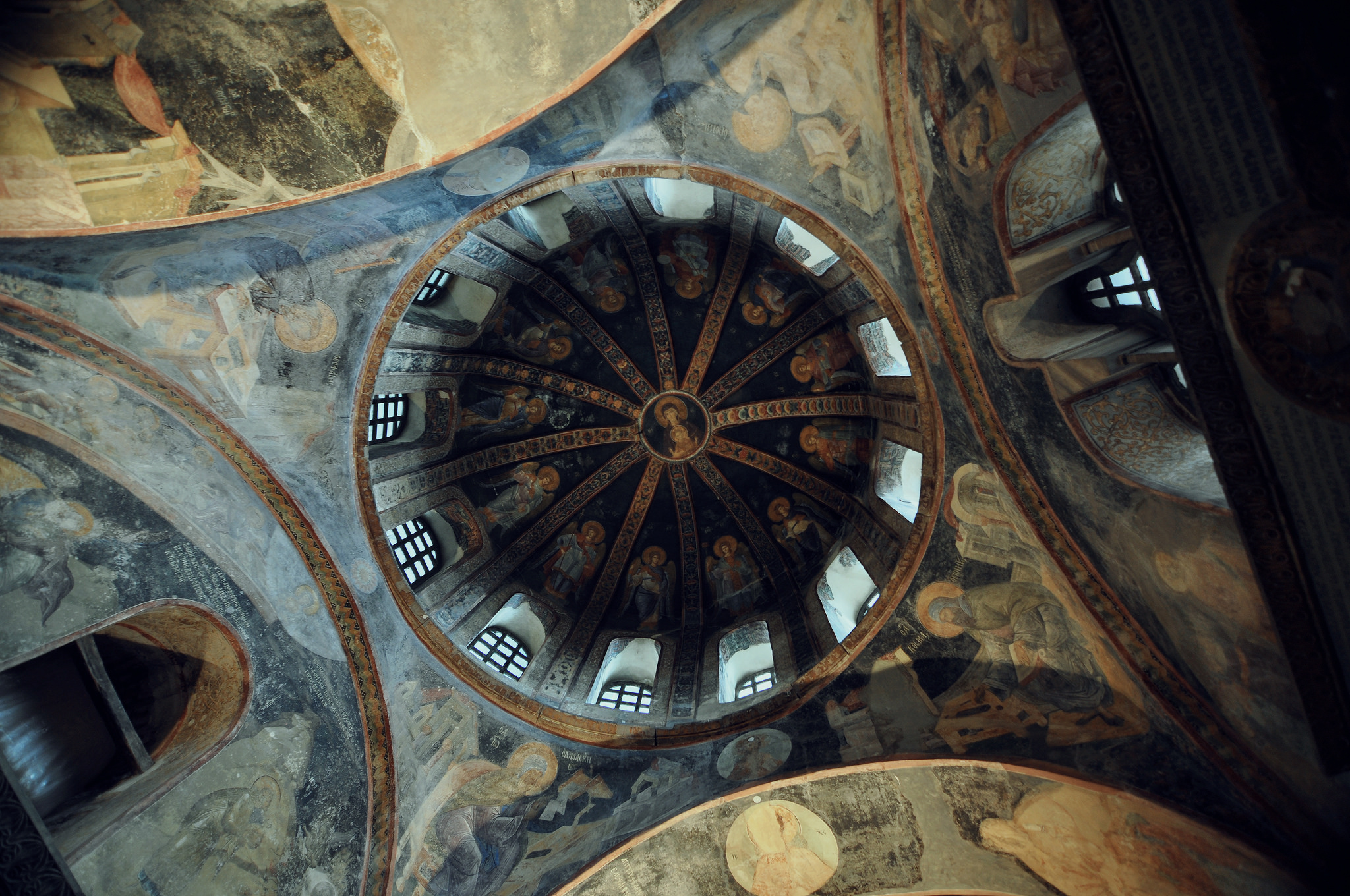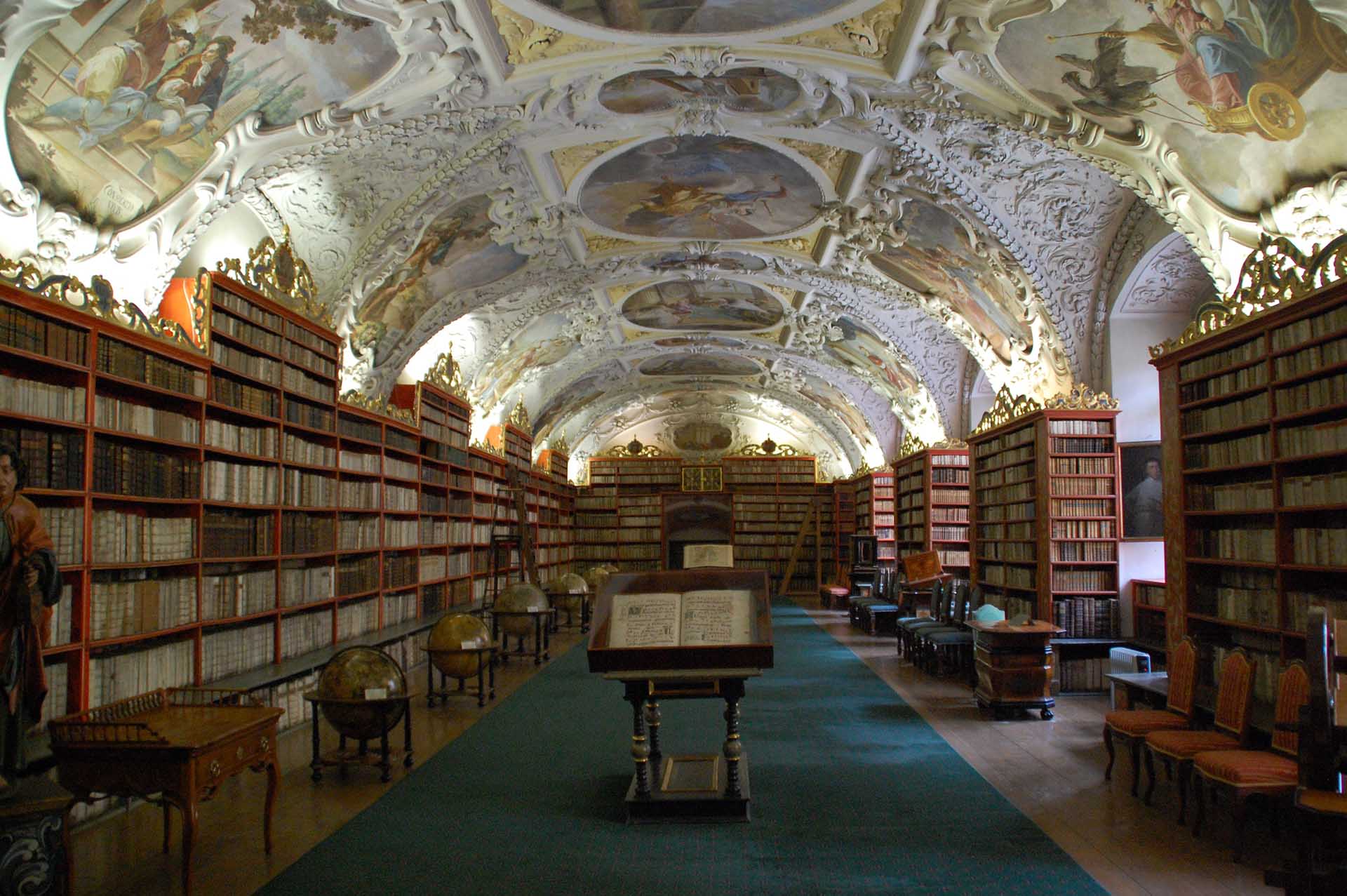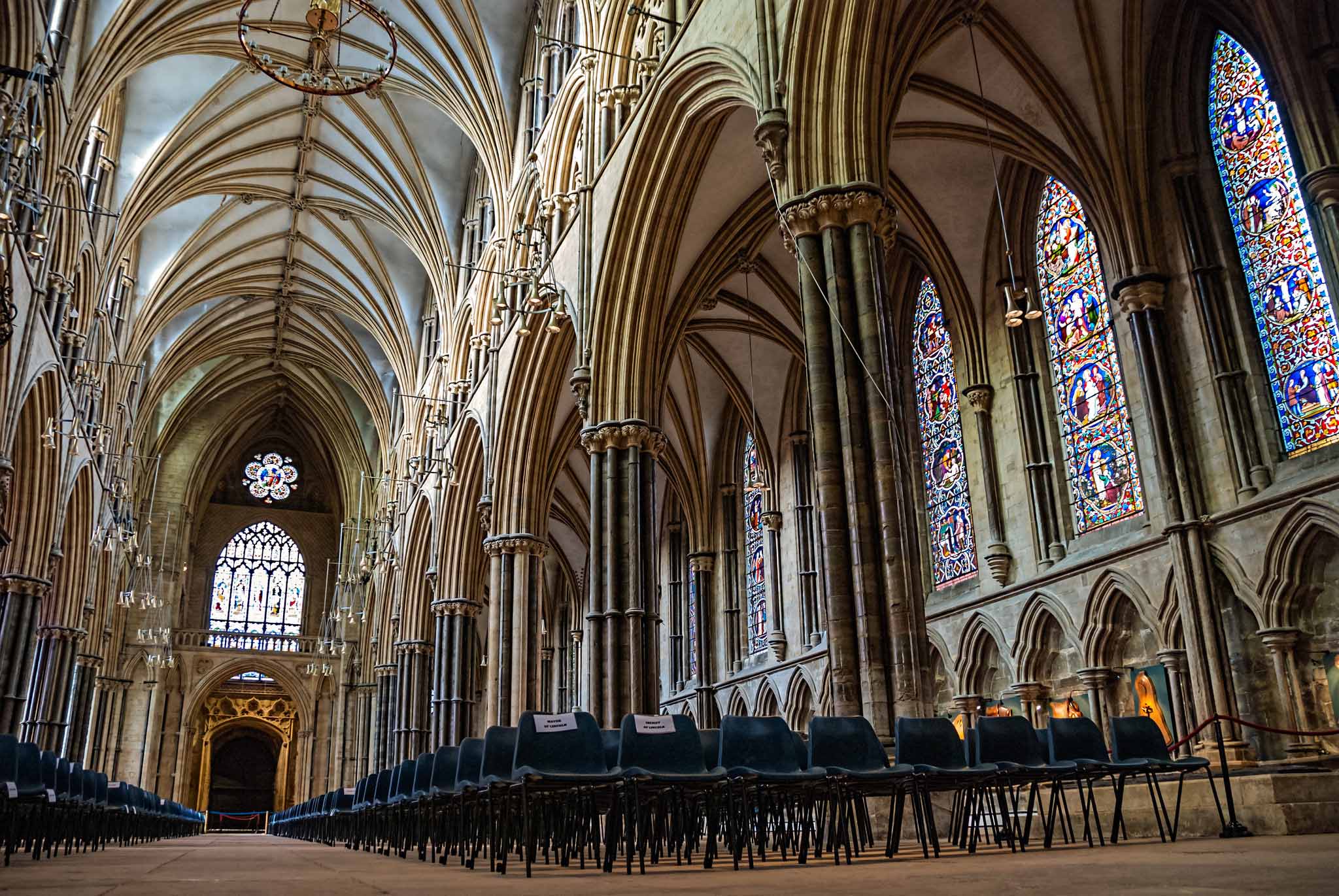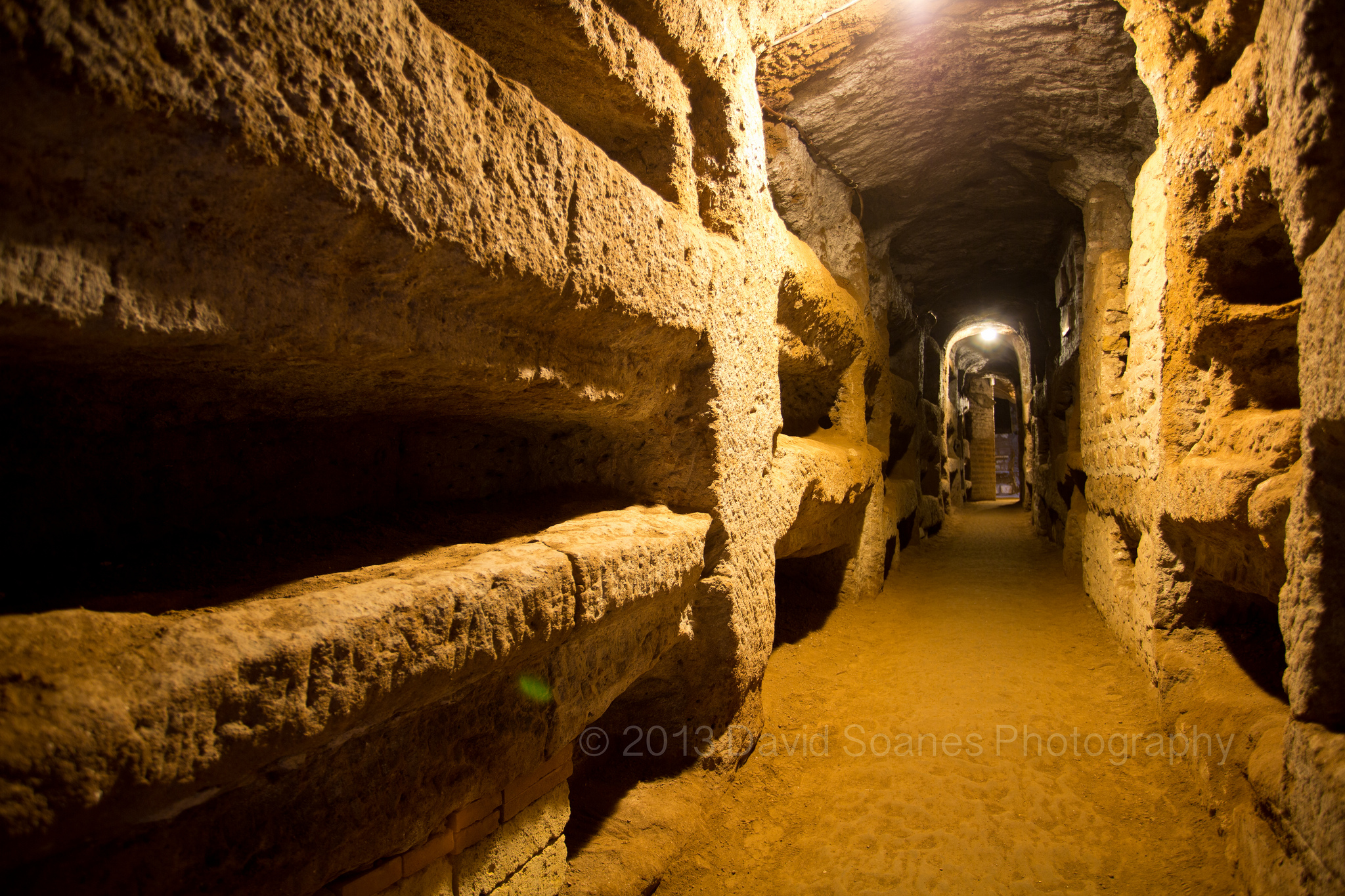Copyright 2006; revised 2014, T. Stanfill Benns (This text may be downloaded or printed out for private reading, but it may not be uploaded to another Internet site or published, electronically or otherwise, without express written permission from the author. All emphasis within quotes is the author’s unless indicated otherwise.)
In these times especially, we must be wary of those who, even though well-intentioned, would overemphasize some aspect of the crises in the Church to the extent that it takes on larger proportions than it truly possessed throughout history as well as today. One of these subjects is the role the Jews have played in the demise of the Church, a popular topic among Traditionalists for decades. Because some Traditionalists actually nurture a bitter animus towards the Jews, who they feel are responsible for the Church’s current state, they have crossed a line that we as Catholics are not allowed to cross. They could potentially do great damage to the Church and the efforts of those who are trying desperately to make known the true causes of this crises. In order to understand what the popes require of Catholics regarding their attitude towards the Jews, please read and consider carefully the pages below.
One of the favorite ploys of the secret societies that quickly besmirches any work is the anti-Semitism smear. Many Catholic authors and theologians writing prior to World War II bought into anti-Semitic propaganda circulated by Hitler and others to justify the coming war. While there is no doubt that certain high-placed Jews play a leading role in secret societies’ orientation to world domination and the persecution of the Church, the blame load must be laid on Catholic, not Jewish shoulders. How else do we explain the Catholicity of an Origen, an Arius, a Montanus, Michael Cerularius, Wycliffe, Huss, Martin Luther, King Henry VIII, Weishaupt, founder of the modern-day Illuminati, and even Hitler, a baptized Catholic? The Church’s worst enemies have always been those of Her own household. Without the help of traitors among Catholic ranks, the destruction we behold in the Church would have been impossible. It was Pope Pius IX who first referred to Freemasonry as “the Synagogue of Satan,” officially defining the meaning of Apocalypse 3:9: “Behold I will bring of the Synagogue of Satan, who say they are Jews and are not, but do lie…I will make them come and adore before thy feet.”
From this verse we can speculate that Freemasonry wishes to pass under false colors and implicate the Jews or those claiming to be Jews by race and religion following the destruction of the Temple of Jerusalem in 70 A.D. Yet such are not Jews by Jesus’ definition. Rev. E. Cahill, S.J. quoting the 14th edition of the Encyclopedia Brittanica, noted: “Freemasonry is essentially an Anglo-Saxon institution.” Referring to statistics printed in the London Times in October 1928, Cahill informs his readers that “thirteen-fourteenths” of all Masonic members are either American or British. He notes that Masonry doubled its ranks between 1910-1928, although in recent decades Masonic Temples reportedly have experienced a decline in membership. Cahill denied that Masonry was founded by the Jews and observed that the Kabbalistic teaching of the Lodge is embraced by only a certain segment of the Jewish population, not all Jews. But he admitted that the advent of Reform Judaism (Zionism) contributed to increased Jewish membership in Masonic ranks.
Jewish convert David Goldstein did not soft pedal the involvement of Jews in anti- Catholic activities, although he does point out that certain Catholic writers treating the “Jewish problem” have relied too heavily on the “Protocols of the Elders of Zion” for their proofs. In his book “Jewish Panorama,” Goldstein dismissed the Protocols as “vicious forgeries.” While this strange revelation of clandestine goals may have seemed preposterous in Goldstein’s day, the fact that so much written in the Protocols has come to pass is a sure sign that they were not the forgeries Goldstein believed them to be, but a blueprint for a high-level branch of Freemasonry. They were not the products of Jewish minds, but the product instead of those burrowing ever deeper into the Church from within, “the serpents in Her bosom” referred to by Pope St. Pius X.
Goldstein reported that about two-thirds of all Reform rabbis who espouse the ideals of Darwin and Marx were counted as Masons in a survey conducted by New Age magazine, the official Masonic publication, in 1927. This number changed little, he added, between 1927 and the book’s publication date in 1940. Goldstein also quoted an expert on Russian affairs, Rev. Edmund Walsh, S.J., concerning the predominant role the Jews played in the rise of Bolshevism. “The role played by Jews and the Germans (in the Bolshevik Revolution) was considerable and active,” Walsh commented. “I maintain that Bolshevism is a natural phase in the evolution of a strictly historical process originating in the soil, culture and the politics of Russia itself.” And this is understandable because in reality, many of those claiming Jewish descent were actually the descendants of white Russian Kazhar converts to Judaism from the eighth century. At that time a large number of Jews from Islam and Greece fled from various persecutions to what is now Russia and converted others there to Judaism. Judaism as their official religion. So while influenced by the Talmudism they converted to, these Russians remained Russian (actually Caucasian) always by race. Eventually the majority of these Jews strictly by religion migrated to Europe, constituting the bulk of the Jewish population there today, (see Arthur Koestler’s “The Thirteenth Tribe”).
Goldstein maintained that the lists printed by Rev. Denis Fahey and others proving the Jews were at the heart of the Revolution were the product of Jewish propaganda, first published by a member of the Ku Klux Klan. Goldstein says those Jews participating in the revolution were shown to be only nominally Jewish. And even Fahey quoted St. Thomas Aquinas (“Summa Theologica” IIIa, P. Q. 47, a6 ad1) to the effect that Christ’s words on the Cross, “Forgive them, Father…” were addressed to “the common people, but not the ‘Princes of the Jews,’ whose ignorance was affected and who evidenced hatred for Christ,” (“The Kingship of Christ”). Rev. Arthur Riley reminded those attending the Good Neighbor Conference in Boston in 1944 that, “The Church never has officially said or stated that the Jews as a race are responsible for the death of Christ,” (pamphlet on “Anti-Semitism”). In medieval times, St. Bernard of Clairvaux demonstrated great compassion for the Jews, urging Catholics to pray for them rather than resort to the civil authorities to punish them. And the Church disciplined the monk Radolphus, who agitated the people to retaliate against the Jews for charging interest and injuring Christian rights.
Goldstein also defined proper titles for the Jewish people during various phases of their existence. He denied that the Jews are any longer a racial entity, having long ago been diluted by migration and intermarriage. He explained that the Jews, proper, existed only from about 400 B.C. to Christ’s death on the Cross. Prior to 400 B.C., they are to be called Israelites. Although Christ was descended from the tribe of Juda/jew-da, (meaning just), he cautioned that Christ’s Jewishness must not be confused with that of the Jews living in Israel after the Resurrection. Those who are called Jews today are to be considered as a separate group, professing beliefs added to the Talmud over the centuries since the Temple’s destruction in 70 A.D. The distinction becomes clear if we consider that Christ’s family kept to the Torah and the old ways of Judaism and was not infected with the Hellenizing element of Greek democracy, like the majority of the Jews in their day. It becomes clearer still when we realize that it was actually the early Romans who first leveled ritual murder charges at the Jews. This is not to say that the malignant among the Jews were not guilty of some of these acts in later centuries, for St. Hugh of Lincoln and Bd. Andreas both are honored by the Church as children murdered by such Jews; also St. Simeon. But in many other cases “The popes courageously, and in face of general popular antagonism, have defended the Jews against calumnious accusations, notably of ritual murder,” (“Anti-Semitism,” Rev. Riley).
The Muslims, Chinese, Native Americans and the Protestants, also, have murdered martyrs revered as saints and no one has accused them of ritual murder. In explaining the Romans’ charges, H. Daniel-Rops demonstrated only that such charges can be exaggerated and even fabricated to create fear and revulsion for political gain. “A very hostile attitude existed toward the Jews in the Roman world,” Daniel-Rops wrote, (“The Church of the Apostles and Martyrs.”) Ridiculous stories and malicious absurdities were circulated about the Jews and their religious beliefs and practices, he explained, much as they are about certain Catholics today. This prejudice then engendered animosity and eventually resulted in “real pogroms” that involved bloodshed. “To a large extent, anti- Christian feeling was to be molded on anti-Semitism,” he observed, especially since the Romans very often perceived the Christians as a quasi-Jewish sect. It would take 1,932 years for anti-Semitism to erupt in all its pent-up fury. But when it did come to the forefront, the Vicar of Christ was at the helm to speak in the very words used by Our Lord Himself: “Forgive them Father for they know not what they do.” Already, however, the forces of evil were at the ready to stifle His words.
At about the same time Goldstein was writing his work, another pen was laboriously completing what would become the last encyclical written by Pope Pius XI. Bearing the official title, “Humani Generis Unitatis,” it was called the “lost” encyclical because Pius XI died only days before it could be issued. Although he left explicit instructions to release the encyclical in the event of his death, his Secretary of State Eugenio Pacelli, who would succeed him as Pius XII, never fulfilled his dying wish.
The immediate commencement of World War II only months after Pius XI left this earth made fulfilling his predecessor’s wish problematic for Pope Pius XII, for reasons Pius XI himself states in his encyclical. Still, no official explanation was ever offered concerning its suppression. Pius XII did eventually issue an encyclical entitled “Humani Generis,” reflecting some of the ideas in his predecessor’s encyclical. But even after the war’s end removed any danger connected with its release, the encyclical remained hidden from view. In this last encyclical, Pope Pius XI addressed the evils of modern technology and established the Church’s official attitude in regards to anti-Semitism. Anticipating the tidal wave inexorably headed for Europe during those dark days prior to his death, the Pope’s words would have done much to establish battle lines for Catholics inundated with Nazi racial propaganda, unsure where to draw the lines according to Catholic dogma. A summary of the anti-Semitism section of his encyclical is given here with quotes where applicable.
1. The Church upholds and defends Her right to warn Her children against those actively hostile to the Christian religion, especially, “misguided souls, whether of the Jewish people or other origin, who ally themselves with or promote” revolutionary movements aimed at the destruction of society and the Catholic Church.
2. Alternating mildness and zeal on the part of the popes over the centuries in addressing this anti-Catholic attitude does not reflect “any interior change in the Church’s policy,” which is easily found confirmed in “the conduct of bishops…and Her ecumenical councils,” and especially the conduct of the Holy See.
3. Under the specific heading “Anti-Semitism,” Pope Pius XI states: “Such persecutory methods are totally at variance with the true spirit of the Catholic Church.” Quoting a decree of the Sacred Congregation of the Holy Office dated March 5, 1928, the pope points to the Church’s professed love for the Jews and desire for their salvation. The decree contains a resolution on the part of the papacy to continue to protect the Jews against unjust oppression and open anti-Semitism.
4. From a psychological standpoint, Pius XI explains that such persecutions only entrench any group in their initial tendencies, doing injury to any hope of conversion.
5. Pius XI urges those unjustly oppressed not to repay evil with evil. He cautions that they must hate the sin and love the sinner where anti-Catholic and anti-Semitic activity is concerned. The pope warns the world that hatred for the Jews readily provides a ruse for attacking Christ and His Church, since Jesus was a Hebrew Himself.
6. The pope explains why anti-Semitism is a double-edged sword for the Church, an explosive issue that can cause Her acute embarrassment and pave the way for accusations that the Church has chosen sides politically. At that time to oppose anti-Semitism would have aligned the Vatican with the Allies, precluding any hope of negotiating an early end to the hostilities. An attempt to defend the Jews would only have succeeded “in attributing earthly and political motives to Her legitimate defense of Christian principles.” On the other hand, the least insinuation from the Vatican that joining the anti- Semites in their vilification of everything Jewish has at least some small justification would be even more disastrous.
7. The pope reminds the faithful that Church teaching is “unequivocal and unchanging.” The Church has no interest in political intrigues but wishes only to uphold the laws of justice and charity. She desires only to preserve the truths of faith entrusted to Her and pray for the eventual conversion of the Jews. She yet holds the Jews responsible for their attitudes toward Christianity and does not fail to teach that the Jews, especially those allied with “the highest tribunal in the Jewish nation,” in collusion with the pagan authorities, were responsible for Christ’s crucifixion. Generally, however, the Church blames the Jewish priests and lay leaders, not the Jewish people themselves, for Christ’s arrest and death.
8. Pope Pius XI decries the ravages of racism in general, and persecution of the Jews in particular. “As a result of this persecution, millions of persons are deprived of the most elementary rights and privileges of citizens in the very land of their birth. Denied legal protection…exposed to every form of insult and public degradation, innocent persons are treated as criminals although they have scrupulously obeyed the laws of their native land. The struggle for racial purity ends by being uniquely the struggle against the Jews…no different in true motives and methods from persecution carried out against the Jews since antiquity. These persecutions have been censored by the Holy See on more than one occasion but especially when they have worn the mantle of Christianity.”
9. Pius XI concludes this section by soliciting prayers for the conversion of the Jews, sternly warning Catholics that no force or promise of material gain ever is to be employed in such conversions, since it would only result in hypocrisy. His final words encourage Catholics to be merciful to the persecuted and defend their rights, demanding from all “a vigorous condemnation of anti-Semitism and racism wherever these doctrines raise their heads.”
Such is the official position of the Catholic Church concerning the Jews and we see no need here, despite any “politically correct” stance demanded by the liberal press to depart from Pius XI’s assessment of the situation. Recent attempts to indict Pope Pius XII for failing to do all he could do for the Jews has been ably refuted by competent historians. The proofs cited in such works as “A Question of Judgment: Pius XII and the Jews,” a booklet written by the Director for the International Affairs Department of the Anti- Defamation League and distributed in 1963 disproves the accusation that Pope Pius XII was an anti-Semite. The author demonstrates, rather, that the Pope did all he could to assist the Jews in their hour of need, just as Pius XI promised and the papacy has done historically. As for the case against anti-Semitism from a Jewish point of view, if the Jewish people themselves absolve us from blame, how can others accuse us?
In the course of his sympathetic and meticulously thorough best-selling book, “Jews, God and History,” Max I. Dumont was careful to distinguish between true and false anti- Semitism, attributing the confusion to semantic difficulties. He pointed out that there must be an illogical and irrational element to true anti-Semitism, stemming entirely from unconscious motivation. He separated what many historians have judged to be medieval Catholic, anti-Semitic prejudice from true anti-Semitism by explaining that Catholics, at least, had a very rational, logical reason for their attitude toward the Jews. Dumont also stated that the true anti-Semite does not offer Jews an alternative to being Jewish, hope of redemption, or a solution to their Jewish “problem.” In contrast, the Church was always careful to hold out the promise of eternal salvation in exchange for conversion in dealing with the Jewish people. Clearly Dumont would not include the Church or Catholics who oppose Jews on religious grounds in the category of true anti-Semites. He did not agree with other historians who took the Popes to task for creating Jewish ghettoes, explaining that in reality, this was only an enforced sort of segregation, not a prison-type experience. True anti-Semites, he emphasized, hate the Jew merely for his race. They hate him to the exclusion of all others, and would not hesitate to exterminate him simply on the basis of race alone. If Mr. Dumont, himself a Jew, can hold such a balanced view, it would seem that others could follow his lead.
The work here presented is not a diatribe against the Jews as a whole, but merely a comprehensive history of an assault against the Catholic Church, from some Jewish factions and other quarters. Accusations of anti-Semitism against the Church are inspired, Rev. Riley said, by “opponents of organized religion…seeking violence to attain a mass movement against religion.” He explained that the real purpose of the false anti-Semitism charge was “either to eliminate Catholics, because their Church is considered to be the precipitating factor, or eliminate the question of the Messianic mission from controversy…Religiously (this) is suicidal.” The world must realize that the Church, as She was constituted and has always existed, is not composed of Jew haters. Her teachings and Her Supreme Pontiffs forbade it, and until recently Catholics were loyal to Church teaching. As Dimont stressed, for every Jew the Inquisition questioned and released, it executed 1,000 Christians.
The Church’s worst enemies were always those of Her own household. If Catholics wish to know why they lost the Church and especially the Latin Tridentine Mass, they need look no further than Daniel 8:12. In this passage he speaks of the cessation of the continual sacrifice, a verse initially applied to the cessation of the Jewish sacrifice and destruction of the Temple under Antiochus but also to a future cessation and destruction, which can only be our own. Antichrist will abolish the continual sacrifice “because of sins,” Daniel wrote. And these sins encompass the sins of the Chosen People in the Old Covenant and ours in the New. Instead of pointing fingers we should be wearing sackcloth and ashes and beating our breasts with mea culpas, all the while reciting the prayer addressed to God in Daniel 9:4-19 for mercy and forgiveness. If, when He comes to chastise us, Jesus cannot find a “few good Catholics” among us who realize the necessity of repentance, how else will the world escape the wrath of God?
